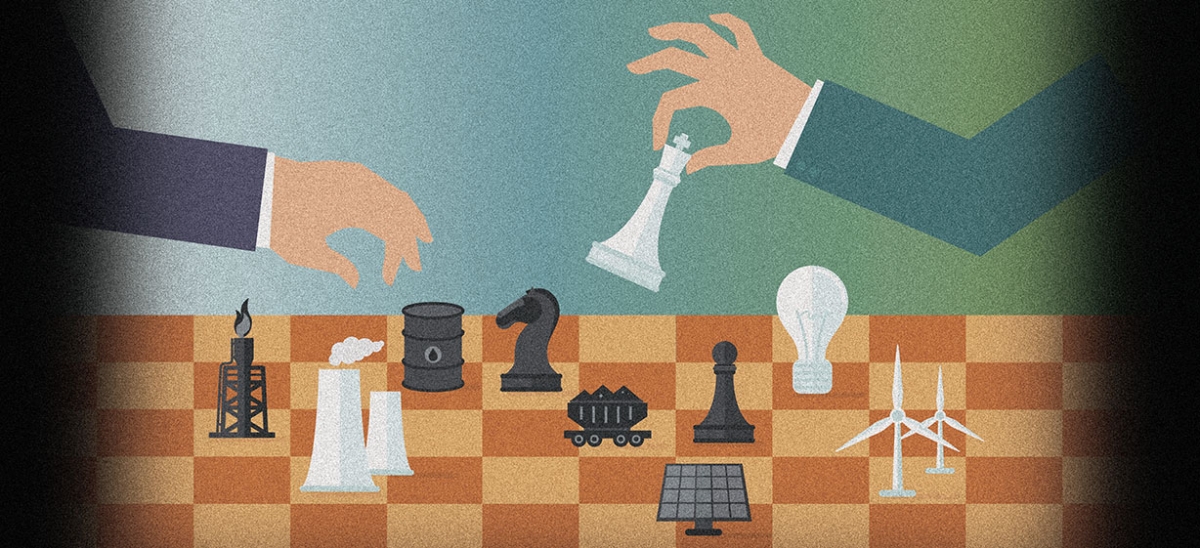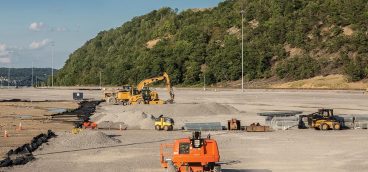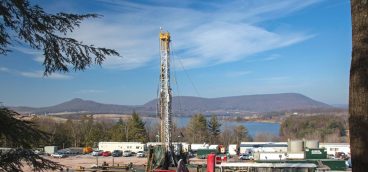The Battle for Cleaner Energy

For two days this past summer, the streets around the William S. Moorhead Federal Building, downtown, were ringed with cops and jammed with largely orderly protestors, some in camouflage, others in tie-dyed T-shirts. They were drawn, as they had been at other cities around the country, to make their voices heard on the U.S. Environmental Protection Agency’s (EPA) historic Clean Power Plan to slash carbon emissions—which scientists believe are a leading cause of global climate change—by 30 percent in the next two decades.
Inside, representatives of environmental organizations and industry, and private citizens, offered brief statements criticizing or supporting the sweeping proposals. (I was among those speaking in support of the measure.)
But for many outside on Liberty Avenue, a different dynamic was at play. There, between the predictable placards that read “Stop the War on Coal” and “Don’t Frack Your Mother,” the question was less about whether the plan could do anything to blunt the rising seas and rising global temperatures, and far more about what the plan meant for Pennsylvania and its immediate neighbors.
Is it, as the coal industry contends, a broadside fired directly against coal and the thousands who still earn their living from it? Or is it instead simply an acknowledgement that the 200-year-old Pennsylvania coal industry has already lost the battle and is already being supplanted by other forms of energy, most notably the vast cache of natural gas in the Marcellus Shale?
There is no question that King Coal—and Appalachian coal in particular—has been feeling the heat in recent years. Although it remains the fuel of choice for power generation in much of the nation—Pennsylvania, the nation’s fourth-largest coal producer, which gets 40 percent of its electricity from coal, is no exception—coal’s market share has sagged significantly in recent years.
While coal-burning power plants still account for 37 percent of the electricity Americans consume, and the industry is likely to remain a key player for another 30 years, it is down from 50 percent just nine years ago, according to the federal Energy Information Administration (EIA). What’s more, the EIA estimates that between now and 2040, only about 3 percent of the new generating capacity that comes on line will be fired by coal.
Nor is there any question that cheap natural gas from the Marcellus and other shale plays has played a critical role in coal’s decline. According to the EIA, 67 percent of the new capacity expected in the next three decades will come from gas-burning power plants. Renewables, too, are taking a bite out of coal’s market share. In 2013, 4 percent of the state’s electricity came from alternative sources of energy, and Pennsylvania’s Alternative Energy Portfolio Standard program requires that to rise to 18 percent by the beginning of the next decade.
What does remain an open question is whether coal’s recent run of bad luck is simply the natural result of market functions or whether federal regulations, like the proposed Clean Power Plan Rules (CPPR) and the earlier Mercury and Air Toxics Standards are tipping the scales and giving gas, renewables and, to a lesser degree, nuclear power a clear advantage.
To put it another way, is coal getting shunted aside by the back of the invisible hand, or are the Obama administration and the EPA putting their finger on the scale, in effect “picking a winner,” as one Corbett administration official described it?
To be sure, the CPPR, as it’s known, is a ground-breaking initiative to reduce carbon pollution by 30 percent of 2005 levels by 2030 nationwide (it’s 31 percent in Pennsylvania). And it would allow states a certain degree of flexibility in meeting those standards. In effect, it allows the states to pick and choose among a few key “building blocks”—switching to cleaner-burning natural gas or renewables, sustaining or expanding nuclear capacity, developing plans to reduce energy consumption and improving energy efficiency. In that, it builds upon steps that many states, including Pennsylvania, have already taken, said Jeremy Richardson, who has studied the plan’s impact on the Commonwealth for the Union of Concerned Scientists. “If you look at the Pennsylvania targets… for the natural gas building block… there’s already been more coal retired in Pennsylvania” than the CPPR demands.
But those steps, whether guided by regulation, the market, or a combination of both, will exact a cost on an industry that is already rocked back on its heels. The EPA estimates that the energy portfolio envisioned in the plan could cost as many as 18,000 jobs in coal and related industries by 2020, though the agency also expects the gas industry to expand its production by up to 14 percent during the same period, with some jobs expected to be created there.
That, naturally, has prompted an outcry, not just from Governor Tom Corbett, who has decried the EPA’s plan as “an assault on Pennsylvania jobs, consumers, and those citizens who rely upon affordable, abundant domestic energy,” but from supporters of the coal industry, who argue that the free market alone should not take the rap for dethroning coal.
Coal plants are not being retired because of low natural gas prices. It’s happening because they cannot afford the expenditures associated with compliance.
— Eugene Trisko, lawyer on behalf of the United Mine Workers of America
The way they see it, an ever-tightening phalanx of federal regulations—that began two decades ago with efforts to restrict sulfur emissions and to reduce acid rain and culminated with the proposed CPPR—have been slowly throttling the industry.
“The White House and… EPA… would like to propagate the notion that coal is being backed down in favor of natural gas because of low natural gas prices and that this is an industry trend,” said Eugene Trisko, a Maryland lawyer who has studied the plan and testified against it on behalf of the United Mine Workers of America. “We reply that trends are driven by policies. Coal plants are not being retired because of low natural gas prices. It’s happening because they cannot afford the expenditures associated with compliance,” first with the Mercury and Air Toxics Standards rule, and now with the pending CPPR, Trisko said.
Supporters of the plan contend that even without the federal regulations, some significant portion of the nation’s coal plants—many of them more than 40 years old, and some approaching 80—are outdated, inefficient and simply cannot compete with modern gas-fired power plants, or, increasingly, with renewables.
“You can argue that anything that causes them to spend a dime [on compliance with federal regulations] does… have an effect,” said Robert Altenburg, senior energy analyst for the environmental organization PennFuture. “But I think if you look from the 10,000-foot view… a lot of these plants were going to retire soon anyway. It’s a lot to expect that a 60-, 70-, or 80-year-old plant can compete with new modern plants. And those new modern plants are going to be gas. That’s what we’re building. They’re certainly competing with wind, they’re certainly competing with solar, but look at where the power is going. Gas is going to drive these people out.”
That’s also the way many energy economists see it. As Robert Dunn, an assistant professor of economics at Washington and Jefferson College who studies energy trends, put it, if you had to pick one factor above all others that is fueling the ascent of natural gas and the decline of coal, it would be the market. “It is the market driving this largely,” Dunn told Pittsburgh Quarterly. “That’s basically just because we have this natural gas source in the region. It’s located right here. It’s low cost. It’s lower emission [and] natural gas use has been really steadily increasing for electricity generation. That’s just the market making that switch certainly without being forced to do it… before these policies go into effect. “I think that’s a pretty solid test, the fact that it’s already happening,” Dunn said.
It is, of course, likely that both the vagaries of the market and the regimen of regulation are playing a role in the rise of natural gas and renewables and the fall of coal. That certainly seems to have been the case in the 2013 decision by Ohio-based First Energy to shutter two western Pennsylvania coal plants: the nearly 45-year-old Hatfield’s Ferry Power Plant in Masontown, Fayette County, and the almost 65-year-old Mitchell Power Plant in Courtney, Washington County. Combined, the two plants generated about 10 percent of the power First Energy provides, and would have accounted for a third of the roughly $925 million First Energy would have had to spend to bring all of its plants into compliance with the existing federal regulations.
But those were not the only factors First Energy considered when it decided to scuttle the two plants. “I can tell you that the reason those plants were closed was definitely economic,” said Stephanie Walton, spokeswoman for the company. “Low energy prices, low demand due to the slow economic recovery, and in part the need to make some capital investment to comply with environmental regulations” all combined to make the closings inevitable.
Increasingly, she said, the two aging coal-fired plants were finding it impossible to compete with cheaper energy from more efficient sources, including gas and renewables and nuclear energy, all of which First Energy has in its own portfolio. And so, the company bowed to the dual realities of the market and the regulators.
“The bottom line was that those plants were losing money and were projected to operate at a loss for the foreseeable future,” she said.
None of that, of course, means that coal, which has played such an outsized role in Pennsylvania’s history over the last 200 years, is likely to disappear entirely any time soon. First Energy continues to include more modern, efficient coal plants in its fleet, Walton said. In fact, the EPA estimates that Appalachia, which has produced upwards of 240 million tons of coal a year, can be expected to produce 91 million tons a year five years from now, and will continue to occupy a significant spot in the nation’s energy portfolio. Nor does it mean that natural gas, which carries with it its own environmental risks and is also likely to face pressure from developing alternative energy sources, has a clear field on which to run forever, said the Union of Concerned Scientists’ Richardson, a West Virginia native whose family has deep roots in the mines.
“I think the big risk we have in West Virginia and probably to some extent in Pennsylvania is that there’s this boom now in gas production and if we just say, ‘all right, coal’s done, now we’re just going to go after the gas,’ we’re absolutely going to have the same problem in a few decades. Because it’s the same story… Look at where renewables are headed and where gas is headed: Gas prices are going to probably steadily climb up and sun and wind are free.”





